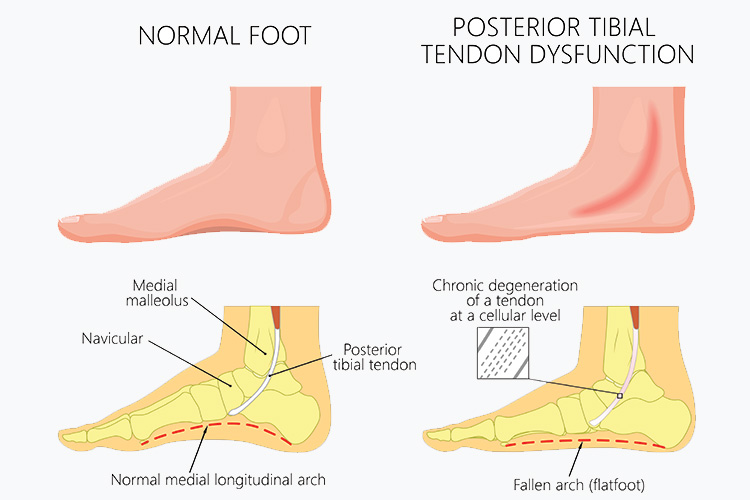Adult Flat Foot/Posterior Tibial Tendon Dysfunction

What is it: The tibialis posterior tendon runs down the inside of the ankle and attaches to the middle of the foot. The tendon’s function is to maintain the height of the arch of the foot and to pull the foot inwards (inversion). In Posterior Tibial Tendon Dysfunction, the tendon becomes dysfunctional, the height of the arch drops (development of a flatfoot) and the heel turns outward (valgus). This results in pain and swelling on the inside of the ankle, and with time, the outside of the foot as well. Left untreated, the joints of the hindfoot (subtalar, talo- navicular and calcaneo-cuboid joints) become painful and arthritic.
Management: Adult Flat Foot/Posterior Tibial Tendon Dysfunction can be treated operatively or non-operatively. Dr Unsworth-Smith will assess diagnose your Flat Foot Deformity and decide whether surgery is an option for you. Non-operative management includes rest, physio, anti-inflammatory medications innersoles and specific footwear.
Surgery depends on the stage of Posterior Tibial Tendon Dysfunction and will include a potential range of interventions including Tenosynovectomy (debridement of the tendon), Tendon transfers, Calcaneal osteotomy (bone cuts to change the position of the heel bone) or Arthrodesis (Fusion surgery).
Postoperatively: Depending on the surgery, patient will either be safe to go home on the day of surgery or may need to stay in hospital overnight. You will be placed in a plaster cast for 2 weeks. You will then be required to be in a boot for another 4 weeks with protected weight bearing. Formal Physiotherapy will begin at 6 weeks. Return to most activities will be between 6-9 months with full recovery at 12 months